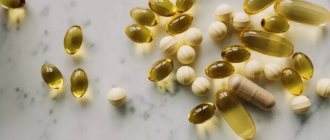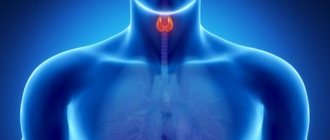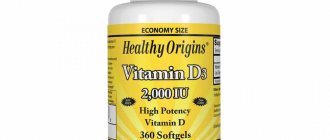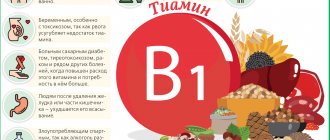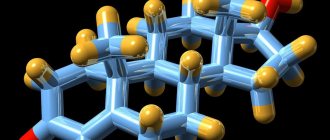Each vitamin plays a significant role in maintaining life and is involved in many different processes. However, almost all have a predominant direction of action. For example, vitamin A is known to be very important for vision, K is indispensable for blood clotting, for immunity, and so on. If we talk about the functions of vitamin D, the main one is that it maintains normal bone health.
Vitamin deficiency is dangerous for adults and children, so it should not be tolerated under any circumstances. To avoid any problems with the musculoskeletal system, it is recommended to monitor the intake of this substance in the body or ensure additional use of vitamin D.
What is vitamin D?
Vitamin D is spoken of as one substance, but in fact it is a whole group of different compounds with a common structure and action.
The most important of these are ergocalciferol, also called vitamin D2, and cholecalciferol, known as D3. Vitamin D was first isolated from fish oil back in the 30s of the last century.
Vitamin D2 is present in some of the foods listed above, and D3 is formed in the human body, in his skin, under the influence of ultraviolet rays from the sun.
The formation of cholecalciferol occurs from the components of sebum, and the “raw materials” for the formation of sebum are animal products and cholesterol molecules.
Effect on other tissues
Little is known about the effects of calciferol on other tissues. Nuclear calciferol receptors have been identified in bone cells, and it has been shown that the increase in calcium concentration caused by calciferol is associated with the synthesis of RNA and protein. However, gene products putatively induced by calciferol have not been identified. The mechanism of communication between calciferol and PTH in their action on bone cells is also not known. An interesting indication of the role of calciferol in cell differentiation was obtained from studies demonstrating that this hormone promotes the transformation of promyelocytic leukemia cells into macrophages. Since osteoclasts are thought to be either macrophage-related cells or directly derived from them, it is likely that calciferol is involved in this process by promoting bone cell differentiation.
The placenta contains 1-alpha-hydroxylase, which appears to play an important role as a source of extrarenal calciferol. The activity of this enzyme is also detected in other tissues, including bone, but the physiological significance of the enzyme in these tissues is minimal, judging by the fact that in non-pregnant animals after nephrectomy the level of calciferol is very low.
The muscle weakness observed with a lack of vitamin D is explained by the effect of this hormone on metabolism in muscle tissue. Consequently, there are other pathological conditions that are caused by a lack or excess of vitamin D.
Foods Rich in Vitamin D
Since a significant part of the vitamin is produced in the epidermis of the skin, first of all, when talking about sources of the vitamin, it is worth mentioning such a “product” as the sun.
The vitamin is released in the skin under the influence of ultraviolet radiation from the sun and under the influence of radiation that a person receives when staying in a solarium. When using a cream with a UV filter, as well as when wearing closed clothing and staying in the shade, the production of vitamin D is reduced.
Food sources of vitamin D2 include fish. Northern varieties of fish are richest in vitamins; their fat contains fairly high dosages of vitamin D. The substance is also present in caviar and fatty dairy products. Some mushrooms, such as chanterelles, also produce ergosterol; small amounts are present in yeast. There is no vitamin in plant foods, with the exception of corn oil.
Interaction with other elements
The human body is a very complex system in which all elements are in constant interaction. And the health and general well-being of a person directly depends on how coordinated their work is. The effectiveness of vitamins can be enhanced by “helper molecules,” or cofactors. These are small compounds that are involved in biochemical processes. The most significant cofactors that enhance the effect of vitamin D include:
- Calcium
. As already mentioned, vitamin D controls calcium levels in the body. The mineral is well absorbed only with a sufficient amount of calcitriol. Therefore, these two substances are inextricably linked with each other.
- Magnesium
. This element performs many functions. For example, it is needed to convert food into energy. Magnesium is also involved in the absorption of calcium, phosphorus, sodium, potassium and vitamin D. Magnesium deficiency can be corrected not only with supplements, but also by including foods such as spinach, nuts, seeds, and whole grains in the diet.
- Vitamin K
. This element is responsible for bone health and also increases blood clotting, so it is simply necessary for the human body. If it is not there, people will begin to die from the slightest injury. Vitamins D and K work together when it comes to proper skeletal development. You can replenish your vitamin K reserves with foods such as kale, spinach, liver, eggs and hard cheese.
- Zinc
. Multifunctional element. With its participation, the body grows and develops, new cells are formed in it, infections are fought and fats, carbohydrates and proteins are fully absorbed. Zinc also facilitates the absorption of vitamin D and helps calcium enter bone tissue. A person can get this element through meat, vegetables and some grains.
- Bor
. A person needs very little of this substance, but it is still irreplaceable. Boron is involved in the metabolism and absorption of vitamin D. It is found in peanut butter, wine, avocado, raisins and some leafy vegetables.
- Vitamin A
. Controls protein synthesis. Together with vitamin D, it participates in the functioning of the genetic code. If a person lacks retinol, the functionality of vitamin D will be impaired. Vitamin A is found in carrots, mangoes, liver, butter, cheese and milk. Retinol is a fat-soluble substance and a powerful antioxidant. If it enters the body from plant foods, then it should be combined with fat-containing foods. This way retinol will be better absorbed.
Increased need for vitamin D
An increased need for calciferol occurs in pregnant and lactating women, in children and adolescents during periods of intensive growth and development. In old age, when natural physiological processes lead to increased fragility of bones, the human body also needs this vitamin more strongly.
The use of medium dosages of vitamin D is mandatory for women who have reached menopause: after the cessation of menstruation, the aging process becomes more active, including the bones begin to suffer significantly and a predisposition to fractures appears.
Pathological conditions
Hypovitaminosis
Lack of vitamin D, calcium and phosphorus leads to rickets. Rickets is characterized by: general growth retardation, curvature of the bones of the limbs, thickening of the joints, “rosary beads” on the ribs, a flat and shallow chest, sunken chest, curvature of the spine - due to weakness of the tendons and muscles, a swollen abdomen due to weakness of the abdominal muscles, and also delayed change of teeth and their abnormal growth. X-ray studies reveal thickening of the articular cartilages and metaphysis of the limb bones. There are two types of hereditary vitamin D-dependent rickets:
Type I is caused by an autosomal recessive gene that determines a violation of the conversion of 25-OH-D to calciferol.
Type II is an autosomal recessive defect that appears to lack calciferol receptors.
In adults, vitamin D deficiency causes osteomalacia. In this case, there is a decrease in both the absorption of calcium and phosphate and the level of these ions in the extracellular fluid. As a result, osteoid mineralization and bone formation are impaired. This lack of mineralization of bones causes their structural weakness. In cases where a significant part of the kidney parenchyma is damaged by a pathological process or is lost, the formation of calciferol is reduced and calcium absorption is correspondingly reduced. Subsequent hypocalcemia causes a compensatory increase in the secretion of PTH, which acts on bone tissue in such a way as to cause an increase in the level of calcium in the extracellular fluid. This is accompanied by intensive bone renewal and structural changes; symptoms of a disease known as renal osteodystrophy develop.
Hypervitaminosis
The problematic fact is that hypervitaminosis D is even more dangerous than hypovitaminosis. Thus, an excess of vitamin D in combination with a lack of calcium aggravates the pathological changes caused by a lack of calcium, provoking serious demineralization of bones and, as a result, bending of the limbs, lameness, fractures, and in combination with an excess of calcium leads to excessive mineralization of bones, which results in hypertrophic osteodystrophy.
Treatment
Treatment of hypercalcemia caused by vitamin D hypervitaminosis:
1. Stopping treatment with vitamin D or taking it from food.
2. Prescription of glucocorticoids (prednisolone 20-30 mg every 12 hours). The effect develops only after 1-2 weeks.
3. In severe cases, forced diuresis is used to remove calcium from the urine; Thiazides are not used because they cause calcium retention by the kidneys.
4. With concomitant hypokalemia, potassium supplements are prescribed to eliminate the effect of calcium on the heart.
Prescriptions of vitamin D preparation for therapeutic purposes:
| Indications | Recommended doses, IU/day |
| Neonatal hypocalcemia | 2000-5000 IU until blood calcium levels stabilize |
| Rickets of young children (classic) | 4000-5000 ME, 30-45 days |
| Vitamin D-resistant rickets (phosphate diabetes) | Selected individually from 5000 ME and above |
| Vitamin D dependent (false deficiency) | Selected individually from 5000 ME and above |
| De Toni-Debreu-Fanconi disease | Selected individually from 5000 ME and above |
| Latwood-Albright syndrome (renal tubular acidosis) | Selected individually from 5000 ME, but not higher than 10000 ME, 30 days |
| Rheumatoid arthritis, chronic eczema, psoriasis | 5000 ME, 45 days |
| Borderline conditions of infectious and dysmetabolic type (secondary immunodeficiencies, frequently ill child syndrome) | 2000-4000 ME, 30-45 days |
| Congenital hip dislocation | 2000-4000 ME. 30-45 days |
| Long-term use of anticonvulsants, corticosteroids and heparin | 2000-5000 ME, 30-45 days |
* The given daily doses of vitamin D are determined based on literature data.
Considering the significant role of vitamin D in the regulation of physiological processes, in recent years, much attention has been paid throughout the world to the issue of sufficient provision of the body with this vitamin.
Absorption of vitamin D from food
Vitamin D is well absorbed from food. Its digestibility increases in the presence of fats and bile acids. Vitamin D is already found in fatty foods, so additional enrichment of the diet with fatty foods is not required.
As for bile acids, their presence in the gastrointestinal tract is not so much a matter of diet, but of health. If a person has good digestion and the liver secretes enough bile, there will be no problems with the absorption of vitamin D.
By the way, a healthy liver is also necessary for storing vitamin D. In the body, it accumulates in adipose tissue and the liver. During the cold season, when little calciferol is produced, its reserves are gradually consumed.
Calciferol in the liver
A specific transport protein, called D-binding protein, binds vitamin D and its metabolites and transports vitamin D from the skin or intestines to the liver, where it undergoes 25-hydroxylation, the first essential step in the conversion of calciferol. 25-Hydroxylation occurs in the endoplasmic reticulum in a reaction involving magnesium, NADPH, molecular oxygen and an unidentified cytoplasmic factor. Two enzymes are involved in the reaction: NADPH-dependent cytochrome P-450 reductase and cytochrome P-450. The reaction is not regulated; it occurs not only in the liver, but (with low intensity) also in the kidneys and intestines. The reaction product 25-OH-D enters the blood plasma (constituting the main form of vitamin D present in the blood) and is transported to the kidneys via vitamin D binding protein.
Biological role of vitamin D
• The most important function of vitamin D is that it is responsible for mineral metabolism in bone tissue. With its help, the body absorbs phosphorus and calcium, important elements for building bones. With a normal intake of vitamin D, high bone strength is ensured. • Calciferol also takes part in the production of sex hormones; its presence is necessary for the high-quality synthesis of estrogens and testosterone, regulation of the menstrual cycle, and ensuring the ability to reproduce. • By potentiating the effects of calcium, vitamin D improves blood clotting. • Helps improve metabolism in general. • Participates in the functioning of the immune system. • Helps improve skin condition, can be used in the fight against skin diseases. • Plays a vital role in the formation of the musculoskeletal and nervous systems, in the implementation of growth and development processes in young children.
Vitamin D and its dosage: more or less?
Vitamin D is perhaps the most “popular” biologically active substance today. Recommendations about its use can be heard both from the media and from doctors in a variety of specialties: from a dentist to an immunologist or endocrinologist, not to mention pediatricians. This “versatility” of vitamin D is associated with the exceptional properties of this substance: cholecalciferol takes part in several dozen biochemical reactions occurring in the body, including vital ones. It is responsible for the normal process of calcium and phosphorus metabolism - accordingly, it plays a role in bone density, teeth strength, and the processes of building and working muscle tissue. Vitamin D is also involved in all parts of the immune system, and with a deficiency of this substance, the body’s defense against both infection and cancer is weakened. This vitamin is also involved in the functioning of the nervous system: it has a beneficial effect on mood, helps prevent cognitive disorders and even Alzheimer's disease. Finally, due to their unique hormone-like structure, cholecalciferol molecules and its metabolites take part in metabolic processes and the production of hormones. And scientists are convinced: all this is not the limit! Probably, the described properties are only part of the unique effects of vitamin D that have been studied, and over time, people will become aware of other possibilities of this substance. But what we already know is enough to say with confidence: every person needs vitamin D for the normal functioning of the body and health in general.
Vitamin D: traditions of taking in different countries
We often ask when taking vitamin D: “What is the optimal dosage?” And this is not an idle question, since cholecalciferol enters our body in three ways at once: with food, vitamin supplements, and is synthesized independently in the skin under the influence of sunlight. Researchers from different countries answer this question differently. For example, in Finland , the country where Minisan® chewable vitamin D tablets originate, there is a whole culture of supplementary intake of cholecalciferol all year round: adults and children 1-2 years of age at least 10 mcg (400 IU) of vitamin D per day, children from 2 up to 17 years old - up to 7.5 mcg (300 IU), and for older people - up to 20 mcg (800 IU) daily! And all this is in addition to a diet rich in cholecalciferol: Finns are supposed to receive the same amount from food, that is, about 10 mcg (400 IU) of vitamin D per day. Why are the recommendations the way they are? Because Finland is a northern country and throughout the year its residents experience a lack of sunlight, and accordingly, the production of “internal” vitamin D in their skin is reduced. At the same time, the Finnish diet is really rich in cholecalciferol - it contains large quantities of fatty fish (including herring and salmon), cod liver, fatty cheeses and dairy products.
table Recommended intakes for vitamin D in Finland*:
| age | dietary intake of vitamin D | Additional need for a vitamin D supplement (in addition to vitamin D obtained from food) |
| Infants: 2 weeks – 12 months | 10 mcg (400 IU)/day | 2-10 mcg (80 -400 IU)/day year round, as recommended by VRN* |
| 1 year | 10 mcg (400 IU)/day | 10 mcg (400 IU)/day all year round |
| 2-17 years | 10 mcg (400 IU)/day | 7.5 mcg (300 IU)/day all year round |
| 18-60 years | 10 mcg (400 IU)/day | 10 mcg (400 IU)/day as needed |
| 61.74 ode | 10 mcg (400 IU)/day | 20 mcg (800 IU)/day all year round |
| >75 years old | 20 mcg (800 IU)/day | 20 mcg (800 IU)/day all year round |
| Pregnant and breastfeeding women | 10 mcg (400 IU)/day | 10 mcg/day all year round |
*Source: VRN (State Dietetic Advisory Council);
Finnish dietary guidelines 2014 and nutritional recommendations for the elderly 2010.
10 mcg = 400 IU Vitamin D.
Also in Europe, there is a clearly defined maximum limit for safe daily intake of vitamin D by the European Food Safety Authority (EFSA).
- for children under one year of age - 25 mcg/day (1000 IU);
- for children aged 1 to 11 years - 50 mcg/day (2000 IU)
- for adolescents over 11 years of age and adults - 100 mcg/day (4000 IU)
The recommendations of US include even higher daily dosages: 600 IU (about 13.5 mcg), 800 IU and even 1000 IU (25 mcg)! And such high doses are justified by numerous clinical studies, the results and conclusions of which are followed by doctors and pharmacists. For example, the American Pharmacists Association (APhA) cites an article by Joan Manson of Harvard Medical School and Shari Bassuk of the Harvard School of Public Health in JAMA2, which states in part: “For vitamin D, 600 IU per day is needed to maintain bone health under the age of 70 and 800 IU per day over the age of 70.” It would seem that the United States is located much further south than Finland: the southern part of the country (about half of the territory) is below the 40th parallel, that is, residents of this area do not experience a deficiency of insolation throughout the year; there is enough sunlight for the synthesis of vitamin D. The population of the northern states only experiences partial deficiency of insolation, mainly in winter. However, doctors recommend taking the vitamin year-round and in high doses. Why? On the one hand, the traditional food of US residents is relatively poor in cholecalciferol. People who deliberately limit animal fats in their diet (and especially followers of a vegetarian diet, of which there are many in America) inevitably deprive the body of vitamin D, which could come from food. On the other hand, with sunlight, not everything is so simple either: the use of sunscreens (of course, justified, as a prevention of early aging and skin cancer pathologies) also has a downside: difficulty in the synthesis of endogenous vitamin D in the skin. There is another factor: an epidemic obesity, which, admittedly, is not yet losing its position in the United States. The body of an overweight person uses significantly more vitamin D on biochemical processes than the body of a slim person. Therefore, doctors recommend replenishing the resulting deficiency of cholecalciferol with additional supplements containing it.
Correct dosage of vitamin D
But what about in Russia , how is it in practice? How much vitamin D does a Russian need, taking into account the geographical features of the country and its culinary traditions? It is impossible to answer this question unequivocally: conditional residents of Sochi and Tyumen, herring lovers and vegetarians, slim people and people with “size”, not to mention their age, may need different dosages of cholecalciferol.
Therefore, we will not provide an average table with recommended dosages for Russia: given its wide geographical location and the fact that the nutritional and lifestyle habits of different people can differ radically, the best solution would be an individual calculation of the optimal dose of vitamin D.
To find out how much vitamin D is needed for adults and how much for children, a blood test should be performed to determine the level of the transport form of this substance, 25(OH)D. By the way, the norm of cholecalciferol is the same for all people, regardless of age and gender. Interpretation of the analysis results according to the current recommendations of the Russian Association of Endocrinologists is presented in the following table:
| State | Level 25 (OH)D |
| Severe hypovitaminosis D | Less than 10 ng/ml |
| Vitamin D deficiency | 11-20 ng/ml |
| Vitamin D deficiency | 21-30 ng/ml |
| Normal Vitamin D Levels | Above 30 ng/ml |
| Hypervitaminosis D | Above 150 ng/ml |
In addition, I would like to say a few words about the exact units in which vitamin D changes. For Russia , the generally accepted dosage is in micrograms (mcg), but in foreign literature the dosage is most often indicated in international units (IU). Converting one value to another is simple: 1 µg of cholecalciferol is equal to 40 IU. Accordingly, 1 IU of vitamin D is equal to 0.025 mcg.
Vitamin D dosage for adults
To prevent vitamin D deficiency, the dosage for adults (from 18 to 50 years old) is at least 200* - 400** IU of cholecalciferol per day - this is one or two Minisan® chewable tablets. Moreover, if the initial level of vitamin D is low, to achieve its adequate concentration in the blood (from 30 ng/ml and above), a course of cholecalciferol at a higher dosage may be required, for example, 800-1000 IU or more per day. Of course, such an appointment should be agreed with a doctor and take place while monitoring the level of 25(OH)D in the blood.
In older and older adults, hypovitaminosis D becomes a common occurrence, so people over 60 years of age are recommended to take at least 600 - 800 IU of vitamin D per day for preventive purposes. This is due to the fact that over the years a person becomes less active, spends less time in the sun, and the intensity of synthesis of endogenous vitamin D in the skin gradually decreases. In addition, in old age, the consumption of foods rich in animal fats decreases, so the resulting deficiency must be compensated for by taking supplements . This is especially important when you consider that in old age, bone tissue begins to actively lose calcium, and taking vitamin D helps to significantly slow down this process. Cholecalciferol also prevents muscle weakness in older people, prevents the development of Alzheimer's disease and age-related weakening of the immune system.
Vitamin D dosage for children
In childhood, when the musculoskeletal system, immune system and the whole body are actively developing, sufficient consumption of cholecalciferol is especially important! For children under one and a half years of age, vitamin D in the form of an aqueous solution is prescribed by a doctor, who also determines the optimal dosage of the substance.
For children over one and a half years old, the optimal form of cholecalciferol is an oil solution, which is convenient to dose in drops and is absorbed as completely as possible by the body. For example, Minisan® vitamin D3 drops. The dosage of the supplement is 2 drops (5 µg (200 IU)) per day for children 1.5-3 years old and 4 drops (10 µg (400 IU)) per day for children over 3 years old.
In case of severe deficiency, the dosage of vitamin D for children can be increased, but such recommendations can only be given by a doctor; you cannot increase the dosage of a vitamin supplement on your own.
Vitamin D dosage for pregnant women
Normally, the level of vitamin D in the blood of an expectant mother should be the same as that of any healthy adult, that is, exceed 30 ng/ml. A sufficient amount of vitamin D in a pregnant woman’s body is an important condition for the health of the woman herself and the proper formation of the fetus. In addition, the results of a number of studies indicate the important role of cholecalciferol in the prevention of complications during childbirth and miscarriage.
For daily preventive use, special multivitamin complexes have been developed for expectant mothers, for example, Minisan® Multivitamin Mom, which also contains vitamin D in a dosage optimal for taking during pregnancy. But I would like to emphasize: if a pregnant woman has a vitamin D deficiency, the dosage of vitamin supplements should be selected by a doctor individually, taking into account the level of 25(OH)D in the blood.
Vitamin D overdose
When determining the optimal dosage of cholecalciferol, a natural question arises: is it possible to overdose on vitamin D? Yes, it is possible if you take vitamins, significantly violating the dosage, for example, 10 tablets instead of one, or a teaspoon instead of two drops, and do this constantly. Unfortunately, these days on various Internet forums and blogs you can find unreliably unsubstantiated advice to take vitamin D in simply huge doses: 2000 and even 5000 IU per day, for long periods of time. With such dosages, “nutraceuticals” and “vitamin specialists” without medical education suggest not only replenishing vitamin D deficiency, but even treating some diseases.
Naturally, most often such experiments on one’s own body end in failure. You need to understand that cholecalciferol supplements should be taken in strict accordance with the dosage recommended by your doctor, and violating it can be dangerous to health.
Another likely cause of overdose is taking active metabolites of calciferol (medicinal) instead of conventional preventive supplements. Active metabolites of vitamin D can only be prescribed by a doctor and require extremely careful administration, in certain doses and in a clearly defined course. (It is worth noting that sometimes even pharmacists in pharmacies do not know the difference between regular vitamin D supplements and its active metabolites, considering such products to be equivalent).
Signs of an overdose may include nausea and vomiting, extreme thirst, increased urination, convulsions, and a sharp drop in blood pressure. If such symptoms appear, it is recommended to consult a doctor immediately.
Finnish vitamins Minisan Vitamin D3: order on apteka.ru!
Vitamin D is a substance that the human body constantly needs, even with regular walks in the sun and eating foods containing cholecalciferol. And no less than the growing child’s body, this vitamin is needed by adults and especially the elderly. Therefore, take care of your health and that of your loved ones: when buying drops for your child, do not forget the pills for yourself and your parents. For example, ordering Finnish Minisan® Vitamin D3 is most convenient here: your order will be delivered to the pharmacy you choose, closer to your home or place of work. For those who are still unsure of the required dosage, we remind you that it is best to do a blood test for the 25(OH)D level and, based on its results, decide together with your doctor how much additional vitamin D you need to take.
Literature:
- Vitamin D deficiency in adults: diagnosis, treatment and prevention. Clinical recommendations. — Russian Association of Endocrinologists. Moscow, 2015
- Manson JE, Bassuk SS Vitamin and Mineral Supplements What Clinicians Need to Know // JAMA. 2018; 319(9):859–860. doi:10.1001/jama.2017.21012.
- Vitamin D for Health: A Global Perspective. — Arash Hossein-nezhad, MD, PhD, and Michael F. Holick, PhD, MD
MAYO CLINIC PROCEEDINGS. November 7, 2013, Vol.88 https://pharmvestnik.ru/content/articles/pitj-ili-ne-pitj-927.html
- VITAMIN D STATUS: MEASUREMENT, INTERPRETATION AND CLINICAL APPLICATION. — Michael F. Holick, Ph.D., MD, Ann Epidemiol. Feb 2009; 19(2): 73–78. https://www.ncbi.nlm.nih.gov/pmc/articles/PMC2665033/
- Vitamin D and metabolism: facts, myths and prejudices - Pleshcheva A.V.*, Pigarova E.A., Dzeranova L.K., - OBESITY AND METABOLISM 2'2012 https://cyberleninka.ru/article/n/vitamin -di-metabolizm-fakty-mify-i-predubezhdeniya
- VITAMIN D: A NEW LOOK AT THE ROLE IN THE BODY, textbook - I.N.ZAKHAROVA, T.E.BOROVIK, T.M.TVOROGOVA, Y.A.DMITRIEVA, S.V.VASILIEV, N.G.ZVONKOVA, - Moscow 2014* according to TR CU 022/2011
* according to TR TS 022/2011
** According to MP 2.3.1.2432-08 Norms of physiological needs for energy and nutrients for various groups of the population of the Russian Federation
VK
Signs of Vitamin D Deficiency
Vitamin D hypovitaminosis is very common, but more often it occurs in a mild form, so it may not be noticed. Babies born in autumn and winter are especially susceptible to it. They are even at risk of developing rickets, a serious disease caused by a lack of vitamin D in the body.
The first signs of vitamin deficiency in children are moodiness, increased sweating, the appearance of “bald patches” on the head, and delayed teething. Later, in the absence of vitamin intake, severe skeletal malformations with bone deformation and other disorders may develop. Today, all children of the first year of life, especially “autumn” and “winter” ones, are prescribed vitamin D prophylactically.
In adults, vitamin deficiency may result in a tendency to fractures.
Mechanism of action
Vitamin D is formed in the skin from 7-dehydrocholesterol under the influence of ultraviolet radiation. However, vitamin D is an inactive compound and some authors consider it as a prohormone, which, by hydroxylation (25-hydroxylase), is first converted in the liver to 25-hydroxycholecalciferol, and then in the kidneys, also by hydroxylation (1-hydroxylase), into 1,25- dioxycholecalciferol.
Hydroxylation in the kidneys can also occur in another way (24-hydroxylase) with the formation of 24-25-dioxy D. Hydroxylation of vitamin D occurs in mitochondria. It should be noted that vitamin D2 (ergocalciferol), contained in plants, is hydroxylated in the body in the same way to form 1,25-(OH)2D2, which is equivalent in biological activity to 1,25-(OH)2D. The activation of vitamin D in the body is shown in the figure below.
The synthesis of 1,25-(OH)2D in the kidneys occurs in the presence of parathyroid hormone and calcitonin.
All forms of vitamin D in the body circulate in the blood in a protein-bound state. This is an α-globulin with a molecular weight of about 56,000 daltons. The concentration of vitamin D in the blood ranges from 1 to 10 ng/ml. The half-life is about 24 hours. 1,25-(OH)2D acts in the intestine by increasing the synthesis of calcium-binding protein, which is responsible for the transport of calcium across the membrane of cells of the intestinal mucosa. In bone tissue, 1,25-dihydroxy vitamin D mobilizes calcium and uses it in newly formed bone tissue for mineralization processes. This effect of the vitamin does not depend on parathyroid hormone.
Along with this, 1,25-(OH)2D affects the synthesis of collagen, which is involved in the formation of the bone tissue matrix. The mechanism of action of the vitamin in bone tissue is blocked by inhibitors of transcription and protein synthesis and is probably no different from the action of 1,25-(OH)2D in the intestine. 1,25-Dihydroxyvitamin D has a direct effect on the kidneys by increasing the reabsorption of calcium and phosphorus in the renal tubules.
Why does vitamin D deficiency occur?
Vitamin D deficiency may have the following causes:
• Insufficient intake of products containing it into the body. This is possible when following strict diets or in people who are vegetarians. • Diseases of the digestive system, especially the liver and biliary tract (disorder in the production of bile, which helps the body absorb the vitamin), as well as damage to the small intestine (impaired absorption of the vitamin). • Short exposure to the sun. In the cold season, when a person is rarely exposed to light and constantly wears warm clothes, the risk of hypovitaminosis is especially high.
Normal vitamin D content in the body
Vitamin D is a vital substance for the human body, so its supply must be controlled. The daily intake depends on the person’s age:
| Age category | Daily requirement for vitamin D |
| Infants under 1 year | 7.5 – 10.0 mcg (400 – 500 IU) |
| Children from 1 to 5 years old | 10 mcg (400 IU) |
| Children from 5 to 13 years old | 2.5 mcg (400 IU) |
| Adults from 15 to 60 years old | 2.5 – 5.0 mcg (500 IU) |
| Adults over 60 years old | 10 – 15 mcg (600 IU) |
| Pregnant and lactating women | 10 mcg (500 IU) |
Daily replenishment dose for vitamin D deficiency
:
| Desired level, NG/ML | 20 | 30 | 40 | 50 | 60 | 70 | |
| Current NG/ML level | 10 | 1000 | 2200 | 3600 | 5300 | 7400 | 10100 |
| 15 | 500 | 1700 | 3200 | 4900 | 7000 | 9700 | |
| 20 | 1200 | 2600 | 4300 | 6400 | 9100 | ||
| 25 | 600 | 2000 | 3700 | 5800 | 8600 | ||
| 30 | 1400 | 3100 | 5200 | 7900 | |||
| 35 | 800 | 2500 | 4600 | 7300 | |||
| 40 | 1700 | 3800 | 6500 | ||||
| 45 | 900 | 3000 | 5700 | ||||
| 50 | 2100 | 4800 | |||||
| 60 | 2700 | ||||||
Consequences of hypervitaminosis (excess vitamin D)
An overdose of vitamin D is almost more dangerous than a lack of it. In Soviet times, it was believed that it was better to have a mild form of rickets than an excess of calciferol.
Hypervitaminosis can be acute or chronic.
The acute form occurs in children if they have been taking vitamin D in high dosages for a long time. The condition may worsen due to increased sensitivity to the drug.
Symptoms of intoxication are as follows:
- lethargy, lack of appetite, constipation or diarrhea, nausea, vomiting. Diarrhea and vomiting can lead to dehydration. This is very dangerous for a child’s body;
- headache, muscle and joint pain, cramps;
- increased body temperature and blood pressure, slow pulse, difficulty breathing.
The chronic form develops as a result of the use of calciferol in therapeutic doses for a long time, at least six months.
Its signs:
- lack of appetite, lethargy, decreased rate of weight gain or complete lack of weight gain;
- changes in bone tissue due to increased calcium content: rapid overgrowth of the large fontanelle, ossification of the sutures of the skull bones, partial ossification of the growth zone of long bones;
- increased calcium content in the blood, which leads to the fact that the mineral begins to be deposited on the walls of the blood vessels of internal organs: in the kidneys, heart, lungs, etc. This, in turn, disrupts their functioning.
Intoxication with calciferol has three forms, which depend on the severity: mild (without toxicosis), moderate (with moderate toxicosis) and severe (with severe toxicosis).
Mild intoxication may pass without a trace. After a severe form, complications can remain for life. Here, the greatest harm is caused by calcium deposits on the walls of blood vessels and in internal organs. The functioning of most body systems is disrupted. Children may develop chronic pyelonephritis and irregular teething.
In adults, an excess of calciferol leads to increased blood pressure and the development of cardiosclerosis, which in turn causes heart rhythm disturbances.
Daily norm
Today, there are different opinions regarding the daily intake of vitamin D. But you should remember the danger of an overdose of the substance. But there are accepted daily indicators that do not pose a threat, and therefore do not require mandatory analysis:
- For people 18 - 50 years old - up to 800 IU.
- For people over 50 – up to 1000 IU.
At the same time, the daily norm may be affected by pathologies that impair the absorption or metabolism of vitamin D. In this case, the indicators for a certain category of people increase by 2-3 times. But you should definitely consult a doctor.
Vitamin D is very important for the proper development of a child's body. To prevent the occurrence of pathology, daily indicators of the substance should be:
- 1000 IU for infants from four weeks to one year.
- 1500 IU for children aged 1-3 years.
- 1000 IU for children under 18 years of age, while in adolescence it can double.
Causes of vitamin D deficiency in the body
Why is the human body sorely lacking vitamin D? The reasons are obvious. This vitamin is synthesized in the skin in extremely small quantities and only under the influence of sunlight, but we spend little time in the sun, constantly staying indoors. And even on a long-awaited vacation on a sunny beach, we protect ourselves as much as possible from UVB rays with the help of sunscreens.
Vitamin D also enters the body with food, but, again, not always in sufficient quantities.
A deficiency of this vitamin is typical for those who suffer from diseases of the kidneys, liver and gallbladder, and experience digestive problems due to disturbances in the intestinal microbial environment (in this case, vitamin D is poorly absorbed from food and is less easily converted into its active form).
Fans of soda, dairy products and some other types of food rich in phosphates often face a lack of vitamin D. Excess phosphorus in the body interferes with the full absorption and use of vitamin D.
The human body has about 30 thousand genes, and among them only 2 thousand are affected by vitamin D. However, its deficiency creates a lot of problems: a person can develop various unpleasant diseases, the total number of which exceeds 200. This is a good reason to take care of the optimal level of vitamin D in the body.
Consequences of vitamin D deficiency in the body
- Skin diseases (psoriasis, eczema, etc.), increased sweating, problems with wound healing. There is clinical evidence that this is due to vitamin D deficiency.
- Partial baldness, hair loss. The correlation between poor hair condition and low levels of vitamin D has been proven for quite some time. Moreover, high doses of this vitamin have been successfully used to treat alopecia areata.
- Bleeding gums, increased caries, tooth loss, increased sensitivity of enamel, discomfort in the mouth.
- Weakened immunity and frequent cases of bacterial and viral infections. If you are constantly sick with ARVI and flu, the reason most likely lies in a lack of vitamin D. In children, its deficiency manifests itself in frequent pneumonia and bronchitis. In severe cases, an autoimmune disease may even develop.
- Increased fatigue, weakness.
- Problems with the musculoskeletal system: aching joint pain, osteoporosis, decreased muscle tone, cramps.
- Depressive conditions and other mental disorders. More than 600 studies have been conducted proving their connection with vitamin D deficiency.
Targeted nutrition tips
that will increase your energy level by 10 out of 10
From TOP nutritionists of the MIIN
Get tips
Thousands of studies have been conducted on the topic of hypovitaminosis D and its consequences, which include premature birth and slow fetal development, rickets in children, cardiovascular disorders, infertility, cancer, erectile dysfunction in men and endometriosis in women, various allergies, thyroid diseases glands, gestational diabetes and type 1 diabetes, autoimmune diseases. Even tooth decay and obesity are associated with low vitamin D levels!
Rules for taking vitamin D
Most domestic doctors recommend replenishing the deficiency of this valuable vitamin by taking it in doses of 400-800 IU. But this is too low a dosage, which is unlikely to have a noticeable effect. Even 5000 IU (a preventive dose of vitamin D for residents of the Northern regions) is not enough: it only allows you to reach the lower limit of the norm.
The optimal dosage for those suffering from hypovitaminosis D with an indicator of 20-40 ng is 10,000 IU daily for two to three months. This is an amount of substance approximately equal to that which would be produced by the human body under UV rays in 20-30 minutes (without SPF creams, of course). After a two to three month course, they are tested again, and if the vitamin level is restored, they switch to a lower dose - 4000-5000 IU (maintenance).
If the 25-OH analysis showed a result of 1-20 ng, then you need to take 20,000 IU of vitamin D every day, and then, within a month, 7,000-10,000 units. This is followed by monitoring, and if the dynamics are positive, the vitamin level is maintained with a prophylactic dose of 5000 IU, regardless of the time of year.
If the test results are above 40 ng, you need to take 7000 IU daily for one to one and a half months, and then maintain the vitamin level with a dose of 5000 units.
There are also higher dosages. They are prescribed, in particular, for tuberculosis and autoimmune diseases. Patients should take 30,000-40,000 IU per day for a long period (of course, under the supervision of a doctor).
We recommend
“Nutritious nutrition for children: from infants to school graduates” Read more
In general, correcting the situation with a lack of vitamin D in the body in 90% of cases turns out to be quite difficult. This vitamin is by no means harmless: long-term use of ultra-high doses (more than 40,000 units) is fraught with toxic effects and overdose. For people who have genetic mutations of VDR (genetic polymorphism of the receptors of this vitamin, which are present in almost every cell of the body), even such gigantic doses do not help to at least minimally improve the level of D. They have to take it in the form of injections. The same applies to people with gastrointestinal diseases.
Problems such as lack of cofactors, excess body weight, problems with intestinal flora, gall bladder, kidneys and liver slow down the treatment process. Pathogenic microorganisms also have an inhibitory effect:
- HIV. This virus binds to VDR(R) receptors and prevents them from converting vitamin D from food into the active form of D.
- Live Borrelia. Lyme/Borrelia reduces monocyte VDR by 50-fold.
- Epstein-Barr virus, or herpesvirus, reduces VDR by almost five times.
- Koch's bacillus and other mycobacteria Mycobacterium tuberculosis complex that cause tuberculosis. The sensitivity of the receptors decreases by 3.3 times.
- Cytomegalovirus (CMV) reduces VDR by 2.2 times.
- Acpergillus fumigus, often associated with cystic fibrosis.
- Helicobacter pylori.
- Pseudomonas aeruginosa (Pseudomonasaeruginosa).
Vitamin D receptors can be activated with the help of gamma-tocotrienols, Omega-3, Resveratrol, curcumin. These drugs work even with VDR mutations.
How to find out your vitamin D level
To determine the level of vitamin D, a special blood test is taken - 25-OH. The blood is examined using high-performance liquid chromatography with mass spectrometry (HPLC/MS).
A number of laboratories instead use the ELISA method, which shows a lower degree of reliability (since it is, in principle, not intended to measure the level of vitamins D and captures many related metabolites, and the result is overestimated by 55%). If there are no laboratories nearby that accept analysis for 25-OH, you can also donate blood for ELISA, but you should remember the error of this method.
If the test result is less than 50 ng/ml, this indicates that the body is in great need of vitamin D and is deficient in it. An even lower figure, 35 ng/ml or less, indicates problems with the absorption of magnesium, calcium, zinc and other microelements from food, and if vitamin D drops below 20 ng/ml, this is a serious deficiency.

